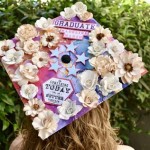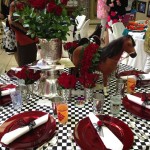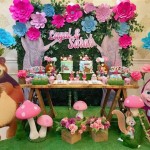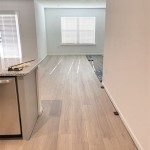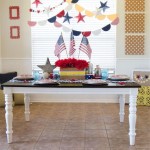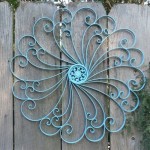Small Decorative Items For Shelves: Enhancing Spaces with Subtle Flair
Shelves, whether built-in, floating, or freestanding, serve as functional storage solutions and prime display areas within a home. While books and larger objects often find a natural place on shelves, the strategic use of small decorative items can significantly elevate the aesthetic appeal of the space. These items, chosen with care and arranged thoughtfully, can introduce personality, texture, and visual interest, transforming ordinary shelves into captivating focal points.
Selecting the right small decorative items for shelves is a process that requires consideration of several factors. The overall style of the room, the color palette, the existing objects on the shelves, and the desired level of formality all play a role in determining the most appropriate choices. Overcrowding should be avoided, and a balance between functionality and aesthetics should be maintained. The placement of these items is just as crucial as their selection. Arrangement techniques, such as creating visual triangles or using the rule of thirds, can contribute to a pleasing and balanced presentation. These decorative objects should complement and enhance the existing shelving arrangement, not compete with it.
Defining “Small” Decorative Items
The term "small" in this context is relative and depends on the size of the shelves themselves. However, generally, these are items that can be easily held in one or two hands and do not overwhelm the surrounding space. They are often used as accents or fillers, adding detail and visual interest without dominating the overall arrangement. These items can range from purely decorative objects to functional pieces that also offer aesthetic appeal.
Examples of small decorative items include: miniatures, small sculptures, decorative boxes, candles and candle holders, air plants and small potted succulents, decorative trays, small vases, interesting rocks or minerals, beads or decorative orbs, hourglass or small timing devices, and paperweights.
Key Considerations When Selecting Small Decorative Items
When curating a selection of small decorative items for shelves, several key considerations can guide the decision-making process and ensure a cohesive and visually appealing result.
1. Theme and Style: Consistency with the room's overall theme and style is paramount. A modern minimalist room, for example, might benefit from geometric sculptures and sleek metallic accents. A rustic farmhouse aesthetic, on the other hand, would be better suited to vintage finds, natural elements, and items with a distressed finish. A coastal-themed room could utilize items like seashells, small pieces of driftwood, or miniature lighthouses. The items should complement each other and contribute to the desired atmosphere of the space.
2. Color Palette: The color palette of the room and the existing shelving arrangement should inform the selection of decorative items. Items with colors that complement or contrast with the background can be used to create visual interest and highlight specific areas. Neutral colors, such as white, cream, and gray, can provide a calming and understated backdrop, while bolder colors can add pops of vibrancy and personality. Consider using a color wheel to identify complementary or analogous color schemes that will create a harmonious and balanced look. It's important to avoid overwhelming the space with too many conflicting colors, which can create a sense of visual clutter.
3. Texture and Material: Introducing a variety of textures and materials can add depth and dimension to the shelving arrangement. Combining smooth and rough textures, as well as different materials like glass, metal, wood, and ceramic, can create a more visually engaging display. A smooth glass vase can be paired with a textured woven basket, or a polished metal sculpture can be placed alongside a piece of raw wood. The interplay of textures and materials adds a tactile element to the space and enhances its overall aesthetic appeal. Layering these elements provides a sophisticated and curated look.
4. Scale and Proportion: Just as crucial is the impact of scale and proportion. The size of the decorative items should be proportionate to the size of the shelves and the surrounding objects. Avoid using items that are too large or too small, as they can disrupt the visual balance of the arrangement. Consider grouping items of different sizes and shapes together to create visual interest and avoid a monotonous look. Using items of varying heights and widths will also add depth and dimension to the display.
5. Personal Significance: Incorporating items that hold personal significance can add a unique touch and make the shelving arrangement more meaningful. Family photos, travel souvenirs, or handmade crafts can all be used to personalize the space and reflect the homeowner's personality. These items can serve as conversation starters and add a sense of warmth and character to the room. However, it's important to curate these items carefully and ensure that they complement the overall aesthetic of the space. Overly sentimental or cluttered displays can appear disorganized and detract from the overall look.
Arrangement Techniques for Small Decorative Items
Once the decorative items have been selected, the next step is to arrange them artfully on the shelves. Several arrangement techniques can be used to create a visually pleasing and balanced display.
1. Visual Triangles: The principle of creating visual triangles is a common technique used in interior design to create a sense of balance and harmony. This involves arranging items in a triangular shape, with the tallest item at the apex and the smaller items at the base. This creates a sense of visual stability and draws the eye through the arrangement. The visual triangle can be formed by grouping three objects together or by strategically placing items on different shelves to create an invisible triangular shape. This technique is particularly effective for creating a balanced and dynamic display.
2. Rule of Thirds: The rule of thirds is another fundamental principle of design that can be applied to shelving arrangements. This involves dividing the shelf into thirds, both horizontally and vertically, and placing key items at the intersection points. This creates a more visually interesting and dynamic composition than simply centering items on the shelf. The rule of thirds can be used to create a sense of balance and proportion and to draw the eye to specific areas of the display. Placing a larger item slightly off-center, for example, can create a more visually engaging composition.
3. Layering: Layering involves placing items in front of or behind each other to create depth and dimension. This can be achieved by placing smaller items in front of larger items or by using books as a backdrop for decorative objects. Layering adds visual interest and creates a sense of depth to the shelving arrangement. Consider using items of different heights and textures to create a more dynamic and layered effect. Be mindful of not overcrowding the shelf, as too much layering can make the display appear cluttered and disorganized.
4. Grouping: Grouping similar items together can create a more cohesive and visually appealing display. This can be achieved by grouping items of the same color, material, or style together. For example, a collection of small succulents can be grouped together in a cluster, or a set of vintage books can be arranged together by color. Grouping creates a sense of unity and order and can make a small collection of items appear more impactful. When grouping items, consider varying the heights and sizes to create visual interest and avoid a monotonous look.
5. Negative Space: Negative space, also known as white space, is the empty space surrounding the decorative items. Leaving some empty space on the shelves is essential for creating a balanced and visually appealing display. Too many items can clutter the space and make it appear overwhelming. Negative space allows the individual items to stand out and creates a sense of calm and order. Experiment with leaving different amounts of negative space to see what works best for your shelving arrangement. A good rule of thumb is to leave at least as much negative space as there are decorative items.
6. Varying Heights: Using items of varying heights is crucial for creating a dynamic and visually engaging display. Avoid placing all items at the same height, as this can create a monotonous and uninspired look. Incorporate items of different heights to add depth and dimension to the shelving arrangement. Tall vases, candlesticks, and books can be used to add height, while smaller objects like sculptures and decorative boxes can be placed at lower levels. Varying the heights creates a sense of visual rhythm and draws the eye through the display.
7. Creating Vignettes: Think of each shelf as an individual vignette, a small scene or grouping of objects that tells a story. Combine different elements, textures, and colors within each vignette to create a cohesive and visually interesting display. A vignette might include a stack of books, a small plant, a candle, and a decorative object. The key is to create a harmonious and balanced composition that reflects the overall style and theme of the room. Experiment with different combinations of items to see what works best for your space. Vignettes can be themed around specific colors, materials, or styles to create a more cohesive and unified look.
8. Functionality: While aesthetics are important, it's also essential to consider the functionality of the shelves. If the shelves are used for storage, incorporate decorative items that also serve a purpose. Decorative boxes can be used to store small items, while baskets can be used to hold books or magazines. Combining functionality and aesthetics creates a more practical and organized shelving arrangement. For example, a decorative tray can be used to hold jewelry or keys, while a small clock can add a touch of style and practicality. The key is to choose items that are both beautiful and useful.
Maintaining and Refreshing Shelf Displays
Once the shelves have been decorated, it's important to maintain and refresh the display periodically to keep it looking fresh and interesting. Dusting the shelves and decorative items regularly will prevent them from becoming cluttered and dirty. Rearranging the items occasionally can also add a fresh perspective and prevent the display from becoming stale. Consider swapping out seasonal items to reflect the changing seasons or holidays. Adding a new piece or two every few months can also revitalize the display and keep it looking current. Regular maintenance and refreshing will ensure that the shelves remain a visually appealing and functional part of the home decor.
Small decorative items are a powerful tool for enhancing the aesthetic value of shelves. By exercising careful planning and attention to detail in both selection and arrangement, one can use these objects to transform ordinary shelving into compelling design elements that add personality and style to any room.

The 40 Best Shelf Decor Ideas For A Stylish Home Joyful Derivatives

12 Tips And Secrets For How To Decorate Shelves A Free Checklist Worthing Court Diy Home Decor Made Easy

How To Style Shelves In 7 Simple Steps And My Fall Shelf Decor Abby Organizes

12 Expert Shelf Decor Ideas How To Style Them Like A Pro The Unlikely Hostess

32 Easy Farmhouse Shelf Decor Ideas Diyfarmhousedecor Farmhousedecor Farmhouseshelfd Living Room Shelves Decorating Bookshelves

The 40 Best Shelf Decor Ideas For A Stylish Home Joyful Derivatives

How To Decorate Shelves In 5 Easy Steps Abby Organizes

How To Style Open Shelves 3 Tips For An Uncluttered Look House By Hoff

45 Best Corner Shelf Ideas For Your Home Displate Blog

Small Master Bedroom Decor On A Budget The Before And So Far Crafting Nook

